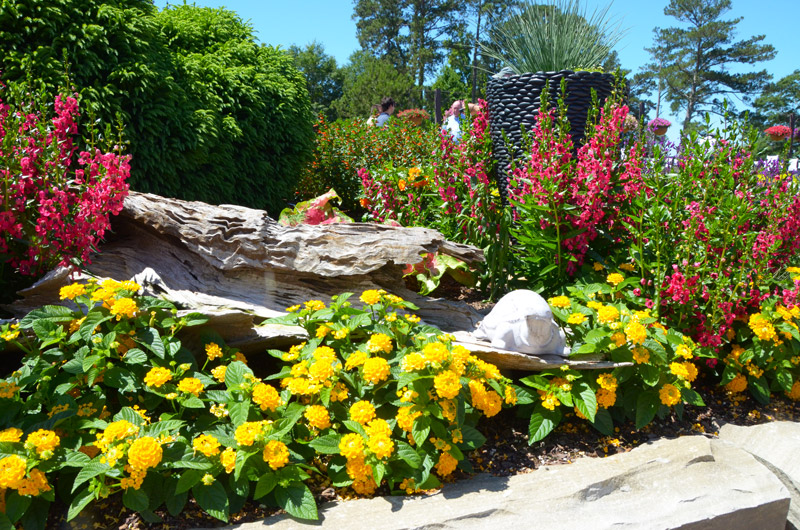Fascination About Hilton Head Landscapes
Table of ContentsGetting My Hilton Head Landscapes To WorkThe Single Strategy To Use For Hilton Head LandscapesRumored Buzz on Hilton Head LandscapesThe 2-Minute Rule for Hilton Head LandscapesThe 6-Minute Rule for Hilton Head LandscapesNot known Incorrect Statements About Hilton Head Landscapes The Facts About Hilton Head Landscapes Revealed
Line creates all types and patterns and can be made use of in a variety of means in the landscape. Line in the landscape is produced by the edge between two products, the overview or shape of a type, or a long straight feature. Lines are an effective device for the developer since they can be made use of to create an unlimited range of shapes and types, and they control movement of the eye and the body.

Lines can have one or more characteristics, such as those explained below, however they typically serve different functions. Figure 1. Lines in the landscape - Landscapers near me. The residential properties of lines determine how individuals reply to the landscape, both psychologically and physically. Straight lines are structural and strong; they produce an official character, are normally connected with a symmetrical layout, and lead the eye directly to a focal factor.
Not known Details About Hilton Head Landscapes
Straight lines are most usually located in hardscape edges and material. Rounded lines produce a casual, natural, relaxed character that is associated more with nature and asymmetrical balance. Curved lines move the eye at a slower pace and add secret to the space by creating hidden sights. Upright lines relocate the eye up, making an area feel bigger.
Vertical lines in the landscape consist of tall, narrow plant material, such as trees, or high frameworks, such as an arbor or a bird home on a pole. Horizontal lines relocate the eye along the ground plane and can make a space really feel bigger. Low lines are extra controlled and develop a sensation of remainder or repose.
The Main Principles Of Hilton Head Landscapes
Low lines are developed by low garden walls, walkways, and short hedges. Lines are made use of to draw kinds on a plan. In strategy view, they define plant beds and hardscape locations. Lines are likewise produced by the vertical forms of built functions and plant material. There are 3 main line types that create form in the landscape: bedlines, hardscape lines, and plant lines.
Bedlines link plant product to your home and hardscape because the eye complies with the line, relocating the gaze with the landscape. Hardscape lines are developed by the edge of the hardscape, which marks the constructed framework. Line can additionally be produced by long and narrow materials, such as a fencing or wall.
More About Hilton Head Landscapes
Kind is discovered in both hardscape and plants, and it is typically the dominant aesthetic component that spatially arranges the landscape and typically figures out the design of the garden. The type of frameworks, plant beds, and yard accessories likewise figures out the overall kind style of the yard. Formal, geometric kinds include circles, squares, and polygons.
Plants produce type in the garden via their lays out or silhouettes, however kind can additionally be defined by a gap or adverse area in between plants - hilton head landscapers (https://fliphtml5.com/homepage/yoptk/stevenagonzales/). Circles can be full circles, or they can be separated into fifty percent circles or circle sectors and combined with lines to develop arcs and tangents
The Best Guide To Hilton Head Landscapes
Circles are a strong design type since the eye is always attracted to the facility, which can be made use of to highlight a focal point or connect other forms. Round types in hardscape and yard panels.
The square type can additionally be fractional and pre-owned consistently to create a grid pattern. Unlike circles, squares are more powerful on the sides, which can be aligned or overlapped to produce unique patterns and even more complex kinds. Polygons are many-sided types with straight sides. Triangles, for instance, are three-sided polygons.
Meandering lines commonly imitate the natural program of rivers or streams and can be called smooth lines with deeply curved wavinesses. Meandering lines (Figure 3) work well for pathways, plant bedlines, and completely dry stream beds. Twisting lines can include passion and enigma to a yard by leading audiences around edges to find new sights and rooms.
The Greatest Guide To Hilton Head Landscapes

Figure 5. Fragmented sides: tipping rocks in pathway. Kind is one of the most enduring top quality of a plant (landscape design hilton head). https://moz.com/community/q/user/h1tnhdlndscps?_=1719959081810. Common plant kinds are well established and standardized, as form is the most constant and identifiable attribute of plants. Kind can additionally be developed through the that site massing of plants, where the general mass develops a different form than an individual plant.
An extremely different kind has to be used with careone or 2 job well as a prime focus, but a lot of wreak havoc. Natural plant kinds, instead of over-trimmed kinds, should establish the bulk of the composition. The significance of general type is essentially depending on the viewing perspectivethe kind of a tree can show up rather various to an individual standing under the canopy versus checking out the tree from a range in an open area.
Some Known Details About Hilton Head Landscapes
Plant forms additionally develop and specify the void or open rooms between the plants, producing either convex or concave kinds in the voids. High-arching tree branches typically create a concave open area under the branches, and a rounded cover with reduced branches loads the room to create a convex form in the open space under the tree.
